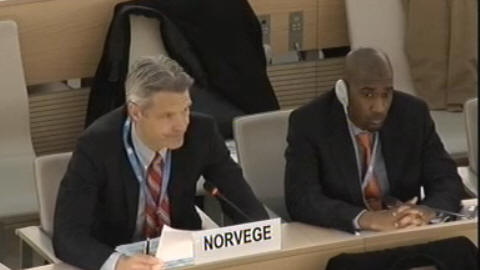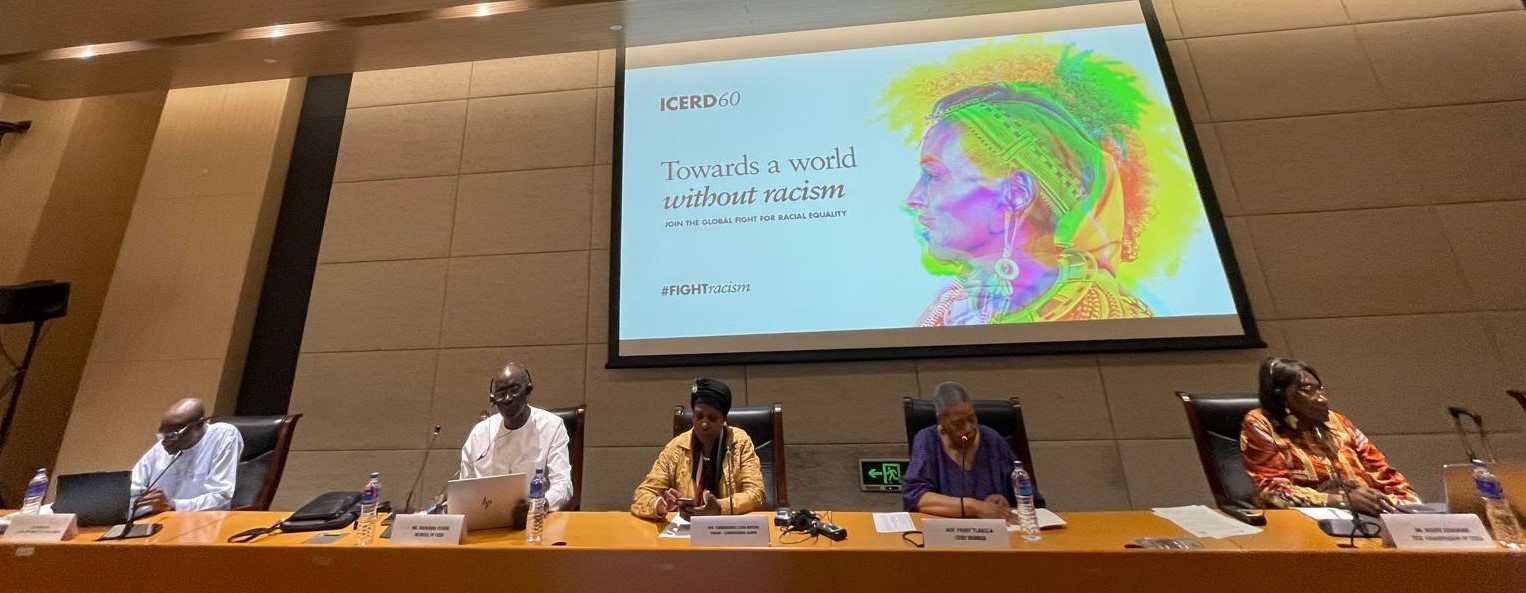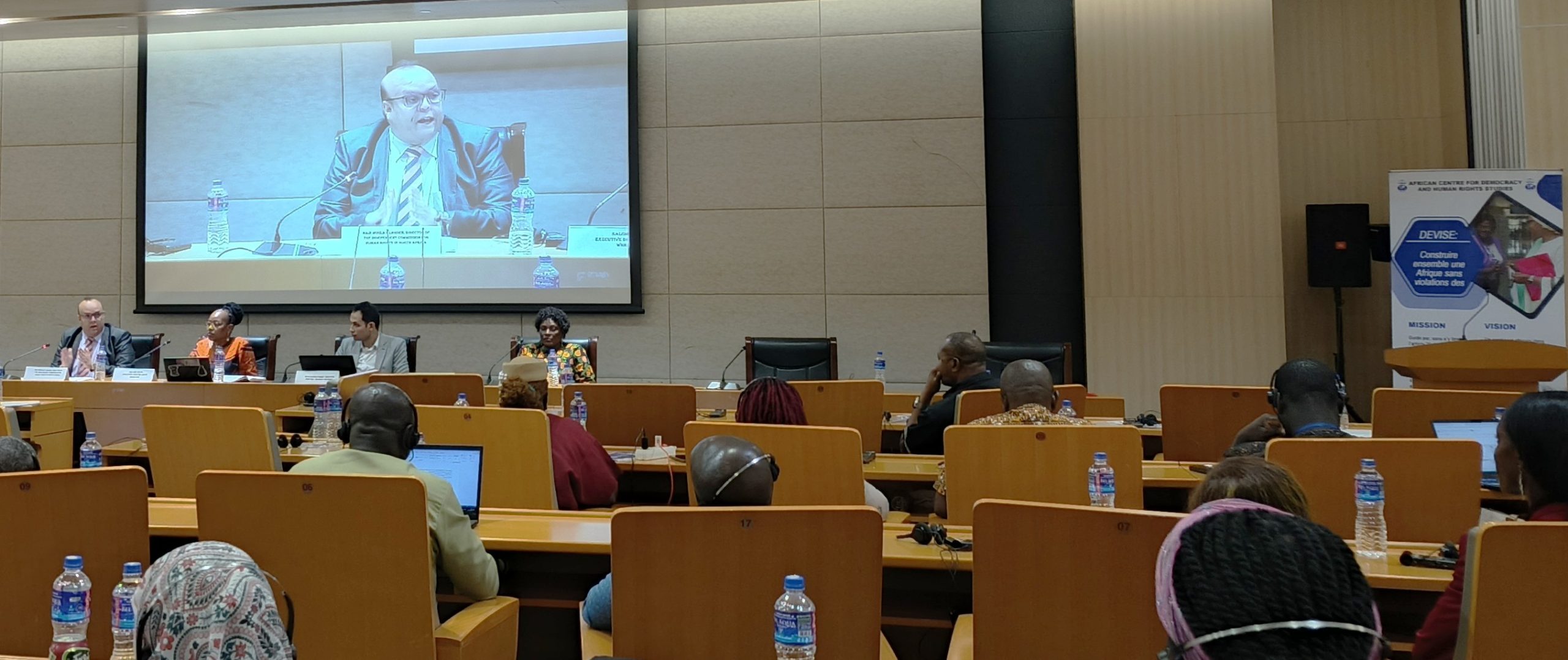- The General Assembly has adopted the first ever resolution on the protection of women human rights defenders. Why did you choose to highlight the work of women human rights defenders this year? What do you see as the main advances achieved through the resolution?
Courageous women human rights defenders work around the world to make our societies better. In return, they often face the most severe risks and consequences. This is unacceptable. By tabling this resolution at the UN, we placed the difficult situation of women human rights defenders on the agenda of the international community.
The resolution sends a clear message that violence against women human rights defenders, including gender-based and sexual violence, can never be condoned or accepted under any circumstance. It’s unacceptable to criminalize, stigmatize or curtail women human rights defenders by violent and other means. The resolution prescribes a number of steps to be taken by States to prevent violence, violations and abuses against women human rights defenders. The resolution also urges all States to publicly condemn violence and discrimination against women human rights defenders.
There is a grave mismatch between realities for brave women on the ground and what has now been agreed at the UN General Assembly. The important work ahead has an internationally agreed basis, and this provides legitimacy for women human rights defenders in all corners of the world. While the provisions of the resolution apply to the protection of all women human rights defenders of all ages, the real advances through the resolution can, however, ultimately only be measured in terms of actual impact on the ground. So, the real work starts now.
Effective, just and sustainable development will only happen with women being allowed to assume their rightful place in society. Gender equality is a fundamental and overriding priority of the Government of Norway.
- Are there any elements that were particularly difficult to negotiate or that you feel should have been covered but were left out?
The comprehensive nature of the resolution allowed for extensive debate among UN Member States on a range of topical issues. We welcome such debate. Indeed this is why we have the United Nations. Difficult as the negotiations at the UN may have been, they mirror various views and situations around the world.
There are a number of issues which could be mentioned. Here are some highlights:
After extensive discussions, all Member States agreed on the right of everyone, individually and in association with others, to unhindered access to and communication with international bodies, including the United Nations system and regional mechanisms. The resolution takes a strong stand against any intimidation and reprisals related to communication and cooperation with international institutions.
The resolution includes supporting roles for national human rights institution, regional mechanisms and the UN system in the follow-up. Under the terms of the resolution, human rights defenders must be allowed to communicate and cooperate freely with such institutions.
Another key point of discussion during the negotiations was the role of international human rights law versus national laws and local circumstances:
Under this resolution all Member States have for the first time agreed on the urgent need to prevent and stop the use of national laws to hinder or limit unduly the work of human rights defenders, including by reviewing and amending relevant legislation and its implementation in order to ensure consistency with obligations and commitments under international human rights law.
This is a significant development. It was not an inevitable result of these negotiations; it was one of the last elements to be accepted by all partners; and in the end it came as a part of an overall package.
We have been asked by many why the resolution does not address specific groups of human rights defenders. While it may be desirable for some to focus on certain groups of defenders or advocacy areas, the resolution should really be seen as a comprehensive tool, applicable to all women human rights defenders, without distinction. By underlining certain groups, others would by definition be left out, and this created difficulties in making such references, for example to the important work of journalists.
Even if journalists are not referenced in the resolution, their role in the defense of human rights – when allowed to conduct their work independently – can of course be of fundamental importance. The resolution should not be regarded otherwise.
The initially tabled draft resolution cosponsored by 18 Member States also contained a paragraph on the right to control and decide freely and responsibly on matters related to sexuality, including sexual and reproductive health, free of coercion, discrimination and violence, as well as reproductive rights. The special focus on these issues from the outset, supported by a significant number of States, sent a strong message.
The particular vulnerabilities of women human rights defenders in this area cannot be denied, and so let me emphasize to defenders working in this area that the resolution applies also to you. The comprehensive nature of the resolution, focusing on the rights of women in all their aspects and the gender dimensions, should be seen in this light. The framework of the resolution includes the Convention on the Elimination of All Forms of Discrimination against Women, the Declaration on the Elimination of Violence against Women, the Programme of Action of the International Conference on Population and Development and the Beijing Declaration and Platform for Action and their review outcomes, as well as the agreed conclusions and resolutions of the Commission on the Status of Women.
- The resolution was the subject of several hostile amendments towards the end of negotiations. What do you make of the deep division in the UN membership in this case?
The international community has sent a clear message in passing this resolution by consensus. The resolution may not be perfect, but it represents a step in the right direction, where the differences were bridged sufficiently for broad agreement on key fundamentals. This in itself is significant. It’s better to focus on what unites us than what sets us apart. The voice of the international community is stronger when united.
Differences in view displayed during the negotiations should be taken seriously, but they were ultimately not allowed to derail the process and in the end the tabled amendments were withdrawn. This indicated a will on all sides to find common ground, which is important in moving forward.
However, various approaches will need to be addressed in the context of the implementation of the resolution. We must now build on the common objectives and course of action set by and for all Member States.
- To what extent was civil society engaged and involved in the process?
Our experience is that civil society has engaged closely in the process at the UN. We understand that the process at the GA has been followed by a wide range of actors in many corners of the world. Please let me take this opportunity to thank people from across the regions for their encouragement and invaluable advice during the negotiations of this resolution.
In the work ahead, in realizing the objectives of the resolution, civil society will of course continue to be indispensable. We look forward to continue the collaboration with civil society within our own country and more broadly in the further follow-up.
- How do you intend to ensure the resolution in its entirety is applied in policy making in the contexts in which it matters most? What does Norway intend to do to ensure the resolution represents a tangible value add for women human rights defenders in their day to day work?
We will continue to provide leadership in this priority area in a comprehensive manner. We will follow up the resolution with all partners through multilateral as well as bilateral channels. We will also continue to work with and provide support to organizations engaged in protecting human rights defenders, including women human rights defenders in the most difficult circumstances.
Norwegian embassies around the world are always open to human rights defenders.
- What plans do you have for keeping the protection of women human rights defenders on the agenda at the GA and HRC?
We will continue to present the General Assembly and the Human Rights Council with relevant draft proposals in close consultations with our partners, including civil society, based on the trends and developments on the ground, as reported by the Special Rapporteur on the situation of human rights defenders and other observers.
The next step will be the mandate renewal for the Special Rapporteur under the Human Rights Council in March 2014.
- What plans do you have for the future development of the defenders resolution at the General Assembly?
We believe that the international community, through the Third Committee of the General Assembly at its 68th session, has sent a clear message on the need for all States to protect human rights defenders and create a safe enabling environment for them, including by preventing effectively all violence against women human rights defenders.
The focus ahead should be on translating this resolution into real action and tangible progress on the ground. That is what matters. We will also continue to consult with our partners on next steps at the General Assembly, and then in future we can revert in detail to the question of further resolutions.
What I can say is that we usually present the Third Committee of the General Assembly with draft resolutions every other year. In general, we favor an approach which allows for a certain amount of time between resolutions, and then to seek to make some real advances reflecting the trends and main challenges. The specific nature of subsequent resolutions will be guided by developments on the ground in this area.
Finally, let me please thank all co-sponsors as well as the wider membership and civil society for working with us over the past six weeks in New York in making this resolution possible. The first UN resolution on protecting women human rights defenders has indeed been a result of the efforts of many involved parties.




